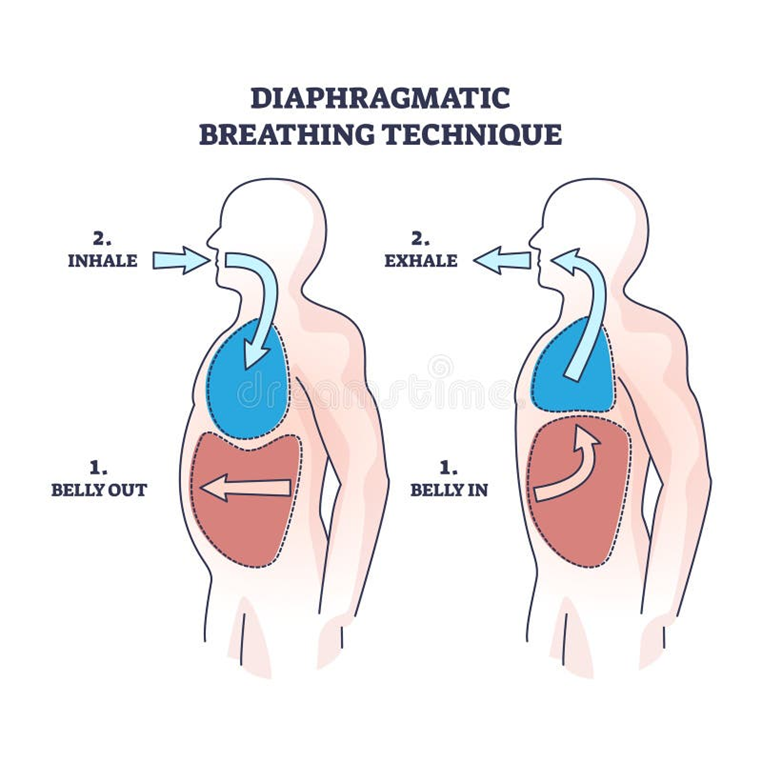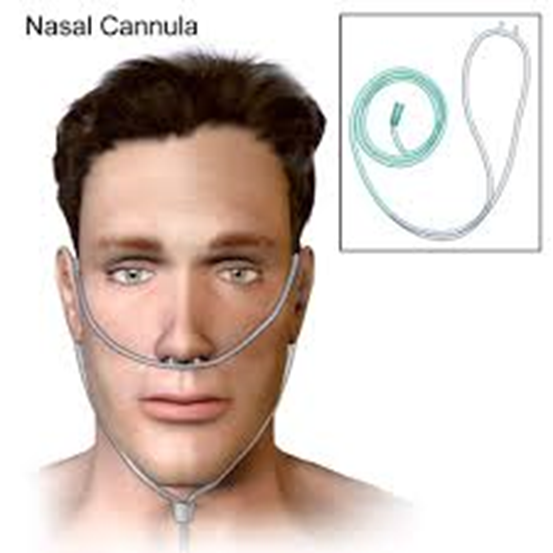A nurse is demonstrating to a client how to perform diaphragmatic breathing. The nurse should educate the client to complete which action?
Raise both shoulders while breathing deeply.
Inhale through the mouth.
Exhale through the nose.
Tighten the abdominal muscles while exhaling.
The Correct Answer is D
The correct answer is d) Tighten the abdominal muscles while exhaling.
Choice A Reason:
“Raise both shoulders while breathing deeply” is incorrect. Diaphragmatic breathing focuses on using the diaphragm rather than the shoulders. Raising the shoulders can lead to shallow chest breathing, which is less effective for oxygen exchange.
Choice B Reason:
“Inhale through the mouth” is incorrect. For diaphragmatic breathing, it is recommended to inhale through the nose. This helps filter, warm, and humidify the air before it reaches the lungs.
Choice C Reason:
“Exhale through the nose” is incorrect. While exhaling through the nose is beneficial in some breathing exercises, diaphragmatic breathing typically involves exhaling through pursed lips. This technique helps slow down the exhalation and keeps the airways open longer.
Choice D Reason:
“Tighten the abdominal muscles while exhaling” is correct. Tightening the abdominal muscles helps push the diaphragm up, forcing air out of the lungs more efficiently. This action is a key component of effective diaphragmatic breathing.

Nursing Test Bank
Naxlex Comprehensive Predictor Exams
Related Questions
Correct Answer is C
Explanation
Choice A Reason:
Place suction equipment at the bedside is incorrect. While having suction equipment available is important for emergency situations, it does not directly prevent postoperative pulmonary complications. Suction equipment is used to clear the airway if the client has difficulty breathing or if there is an obstruction.
Choice B Reason:
Administer a prophylactic expectorant is incorrect. Prophylactic expectorants can help in managing secretions, but they are not the primary intervention for preventing postoperative pulmonary complications. The main goal is to promote lung expansion and prevent atelectasis.
Choice C Reason:
Encourage the use of an incentive spirometer is correct. Using an incentive spirometer encourages deep breathing and lung expansion, which helps prevent atelectasis and other postoperative pulmonary complications. It is a key intervention in postoperative care to maintain optimal lung function.
Choice D Reason:
Perform range of motion exercises is incorrect. While range of motion exercises are important for preventing musculoskeletal complications and promoting circulation, they do not directly prevent pulmonary complications. The focus for pulmonary health is on lung expansion and clearing secretions.
Correct Answer is D
Explanation
Choice A Reason:
“Delivers a low concentration of oxygen” is incorrect because a nasal cannula can deliver varying concentrations of oxygen depending on the flow rate set by the healthcare provider. The concentration can range from low to moderate, typically between 24% to 44%.
Choice B Reason:
“Delivers a constant rate of oxygen” is partially correct but not entirely accurate. While the flow rate can be constant, the key aspect is the specific concentration of oxygen delivered, which is more relevant to the client’s understanding.
Choice C Reason:
“Delivers a high concentration of oxygen” is incorrect because nasal cannulas are generally used for low to moderate oxygen delivery. High concentrations of oxygen are typically delivered through other devices like non-rebreather masks or high-flow nasal cannulas.
Choice D Reason:
“Delivers a constant flow of a specific concentration of oxygen” is correct. This explanation accurately describes how a nasal cannula works. It provides a continuous flow of oxygen at a specific concentration, which is adjusted based on the client’s needs and the healthcare provider’s prescription.

Whether you are a student looking to ace your exams or a practicing nurse seeking to enhance your expertise , our nursing education contents will empower you with the confidence and competence to make a difference in the lives of patients and become a respected leader in the healthcare field.
Visit Naxlex, invest in your future and unlock endless possibilities with our unparalleled nursing education contents today
Report Wrong Answer on the Current Question
Do you disagree with the answer? If yes, what is your expected answer? Explain.
Kindly be descriptive with the issue you are facing.
